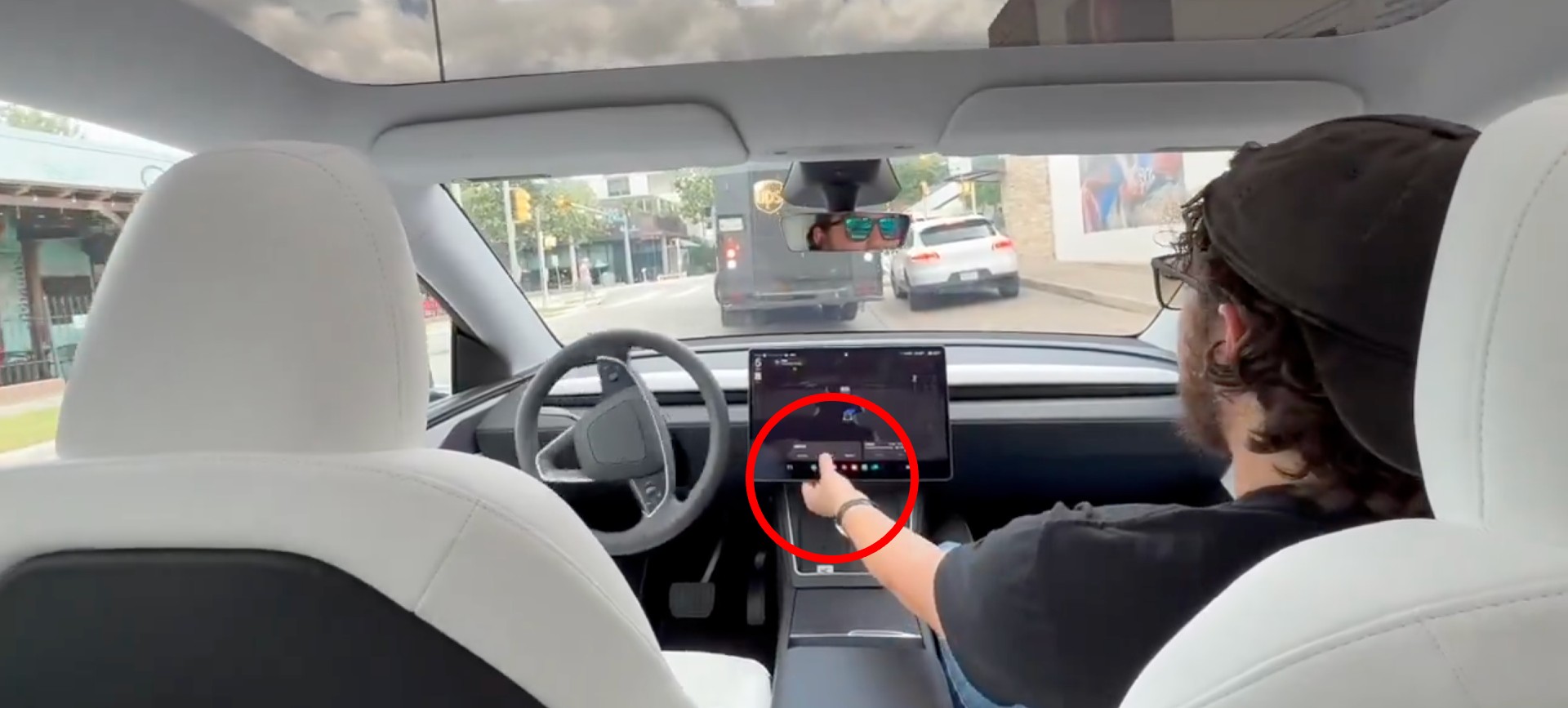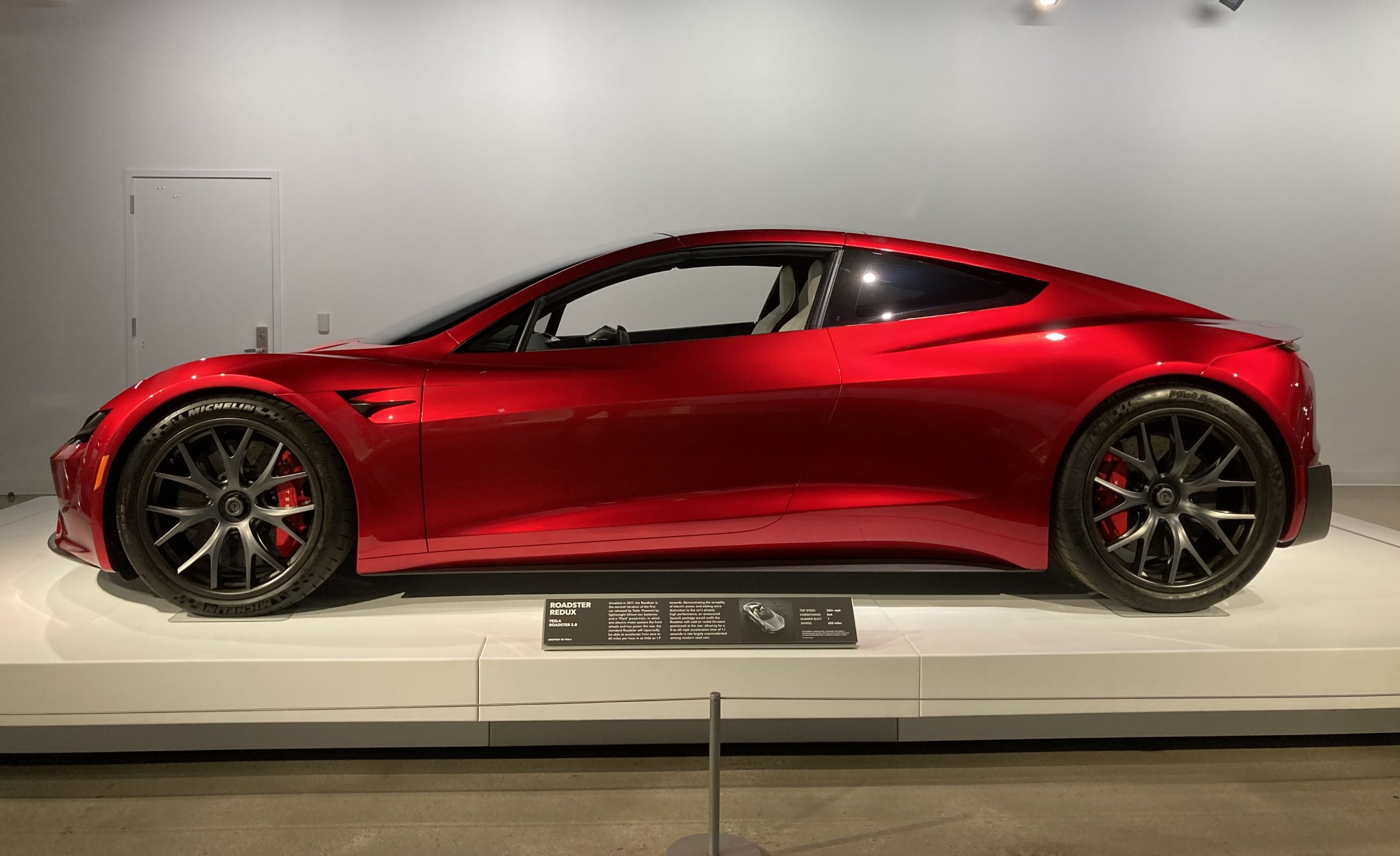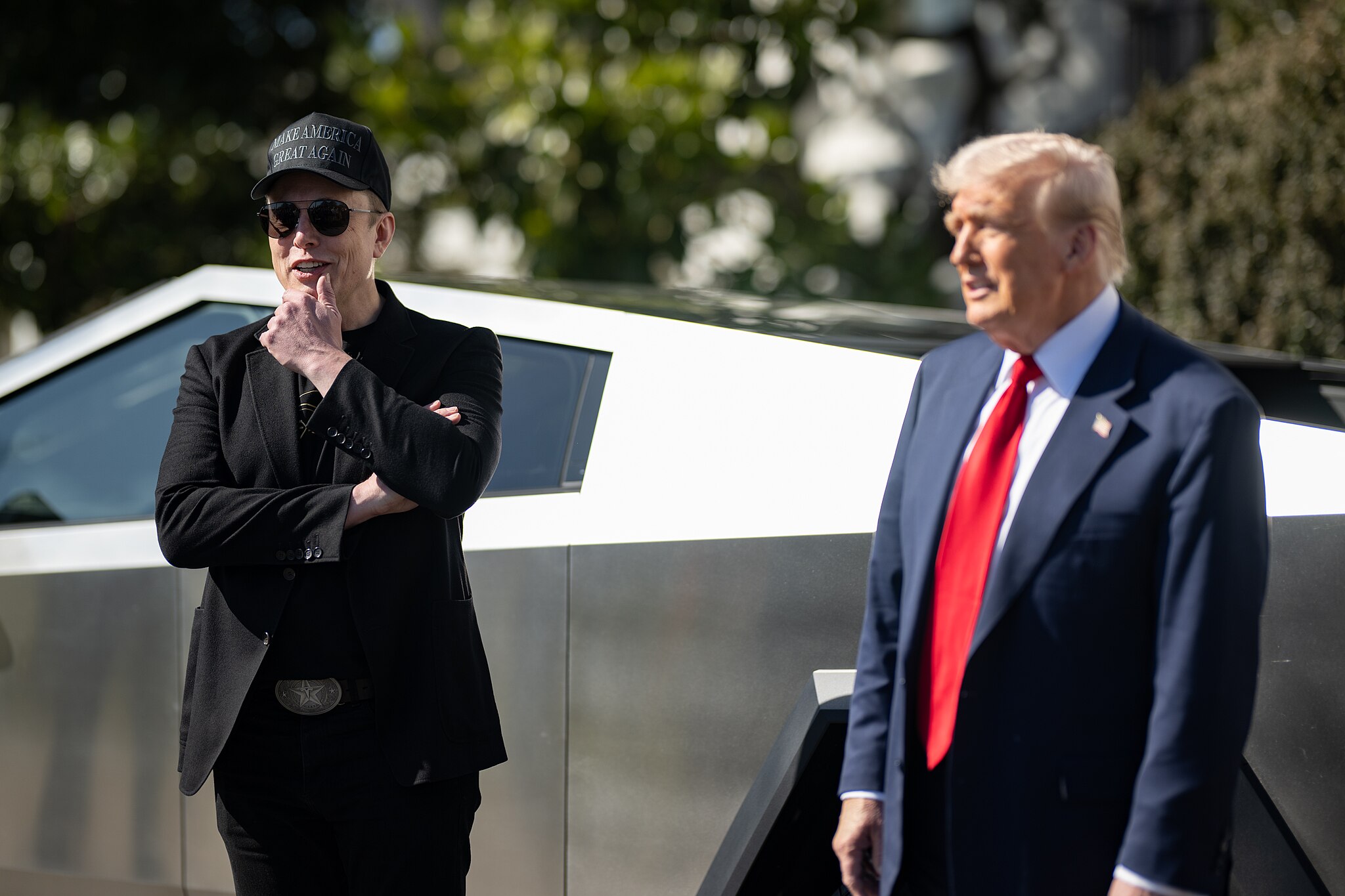Elon Musk
Tesla has one big bottleneck with its public Robotaxi launch, but it can fix it easily
Elon Musk plans for Tesla Robotaxi to be open to the public in Austin in September.

Tesla CEO Elon Musk said that the company’s Robotaxi program would open to the public in September, but there is one big bottleneck that would inhibit it from launching smoothly.
The thing is, it can be resolved in no time, and Tesla can fix it internally.
In Austin, the Robotaxi platform has been in operation since late June. The launch of the program only allowed a handful of privileged influencers and groups to access the driverless ride-hailing service, although it has expanded this group on several occasions.
It has also slowly added vehicles to the fleet, starting at 11 cars when it launched in June. There have been a few cars added, but Tesla has continued to prioritize safety, keeping its rider population and number of vehicles low for the time being.
However, this is going to cause quite a bit of a bottleneck in next month’s planned public launch, as there will be an open invitation for anyone and everyone to test out the Robotaxi platform in Austin.
Tesla CEO Elon Musk confirms Robotaxi is opening to the public: here’s when
Many people have been waiting for an invitation to ride in a Robotaxi, and Tesla has not been prone to give one to just anybody.
As that becomes a much larger number next month, Tesla is going to have to step up its Robotaxi fleet number, as well as its population of Safety Monitors, the riders that sit in the passenger seat to ensure everything goes smoothly.
Tesla is going to need to add A LOT more cars if they want to be able to meet the demand, otherwise rides will be unavailable to most.
— Sawyer Merritt (@SawyerMerritt) August 11, 2025
While the geofence in Austin has roughly doubled in size twice during both of Tesla’s expansions of the service area, the company is still playing it safe with rider population growth, something that aligns with its focus on safety.
Musk said recently about the expansion of Robotaxi to customer-owned vehicles:
“As I said, we’re being paranoid about safety. But I guess next year is I’d say confidently next year. I’m not sure when next year, but confidently next year, people would be able to add or subtract their car to the Tesla, Inc. fleet.”
The Robotaxi fleet will, without a doubt, revolutionize the way people view ride-hailing. Tesla seems ready to open it up to the public next month, based on what Musk said, but some changes will have to occur to ensure it goes smoothly.

Elon Musk
Elon Musk just said some crazy stuff about the Tesla Roadster

Elon Musk appeared on the Moonshots podcast with Peter Diamandis today to discuss AGI, U.S. vs. China, Tesla, and some other interesting topics, but there was some discussion about the upcoming unveiling of the Roadster, the company’s electric supercar that will arrive several years after it was initially slated for release.
Musk made some pretty amazing claims about the Roadster; we already know it is supposed to be lightning-fast and could even hover, if Tesla gets everything to happen the way it wants to. However, the car has some pretty crazy capabilities, some of which have not even been revealed.
On the podcast, Musk said:
“This is not a…safety is not the main goal. If you buy a Ferrari, safety is not the number one goal. I say, if safety is your number one goal, do not buy the Roadster…We’ll aspire not to kill anyone in this car. It’ll be the best of the last of the human-driven cars. The best of the last.”
🚨 Elon on the Roadster unveiling, scheduled for April 1:
— TESLARATI (@Teslarati) January 6, 2026
Musk makes a good point: people who buy expensive sports cars with ridiculous top speeds and acceleration rates do not buy them to be safe. They hope they are safe in case of an emergency or crash, but safety is not at the forefront of their thoughts, because nobody buys a car thinking they’ll crash it.
The Roadster is truly going to push the limits and capabilities of passenger vehicles; there’s no doubt about that. Tesla plans to show off the new version car for the first time on April 1, and Musk has only hinted at what is possible with it.
Musk said back in November:
“Whether it’s good or bad, it will be unforgettable. My friend Peter Thiel once reflected that the future was supposed to have flying cars, but we don’t have flying cars. I think if Peter wants a flying car, he should be able to buy one…I think it has a shot at being the most memorable product unveiling ever. [It will be unveiled] hopefully before the end of the year. You know, we need to make sure that it works. This is some crazy technology in this car. Let’s just put it this way: if you took all the James Bond cars and combined them, it’s crazier than that.”
Production is set to begin between 12 and 18 months after the unveiling, which would put the car out sometime in 2027. Hopefully, Tesla is able to stay on track with the scheduling of the Roadster; many people have been waiting a long time for it.
Elon Musk
Tesla stands to gain from Elon Musk’s rekindled friendship with President Trump
“He’s 80% super genius and 20% he makes mistakes, but he’s a good guy. He’s a well-meaning person.”

Tesla CEO Elon Musk and President Donald Trump are back in each other’s good graces, and after a lengthy period where the two were at odds, the pair seemed to make up back in September.
The two were spotted at dinner at Trump’s Mar-a-Lago estate in West Palm Beach over the weekend, which was followed by a press conference on Air Force One, where the President called Musk, “great.”
He continued:
“He’s 80% super genius and 20% he makes mistakes, but he’s a good guy. He’s a well-meaning person.”
Musk previously had a position in Trump’s White House, as he was in charge of reducing government spending and waste by leading the Department of Government Efficiency (DOGE). Musk stepped back from his role in the government last year to focus on Tesla and SpaceX, as well as other projects.
Trump tonight on @elonmusk: “Elon’s great. He’s 80% super genius and 20% he makes mistakes, but he’s a good guy. He’s a well meaning person.” pic.twitter.com/QUprw06bie
— Sawyer Merritt (@SawyerMerritt) January 5, 2026
However, Musk, back in Trump’s good graces, stands to get some assistance for Tesla from the White House moving forward, especially as he and the President are back to being friends and allies.
Reduced Scrutiny from a Regulatory Standpoint
Tesla has been the subject of several National Highway Traffic Safety Administration (NHTSA) probes, including ones that dive into Autopilot and Full Self-Driving and incidents involving the two.
Trump has already initiated a more relaxed environment for autonomous vehicle oversight. Last January, he proposed a voluntary framework system for self-driving vehicles, which reduced barriers for companies involved with autonomy.
In April, he relaxed crash reporting and exemptions for autonomous vehicles, creating a clearer pathway for companies to innovate and easing compliance burdens.
In September, Transportation Secretary Sean P. Duffy led efforts to update FMVSS, eliminating redundant human-driver requirements. This aimed to create a single national standard, boosting deployment and eliminating much of the bureaucracy that stalls innovation.
Favorable Autonomous Vehicle Framework
Some of the moves that were mentioned previously will assist Tesla in rolling out its Robotaxi network across the country, and although it currently has to go through the process on a state-level, things could become easier for Tesla and other companies exploring self-driving vehicles.
Musk could have a direct line to Trump that would help create fewer regulatory barriers for the companies involved in developing autonomous vehicles, which would directly benefit Tesla, but also its competitors like Waymo.
Protection from International Competition via Trade Policies
It is no secret that the President is focused on domesticating manufacturing, AI efforts, and everything in between. This is enforced by the tariffs the White House enforced last year, which have prioritized U.S.-based companies.
This could shield Tesla from potential foreign competitors, especially ones like BYD, which have been formidable opponents.
Overall, these gains stem from a more aligned political environment, where Musk’s influence could prioritize deregulation over enforcement; this leads to more innovation and relaxed regulations, but there are some risks. However, outcomes are dependent on the depth of President Trump and Musk’s reconciliation.
Long-term benefits to Tesla would require concrete policy actions.
Elon Musk
Tesla CEO Elon Musk drops massive bomb about Cybercab
“And there is so much to this car that is not obvious on the surface,” Musk said.

Tesla CEO Elon Musk dropped a massive bomb about the Cybercab, which is the company’s fully autonomous ride-hailing vehicle that will enter production later this year.
The Cybercab was unveiled back in October 2024 at the company’s “We, Robot” event in Los Angeles, and is among the major catalysts for the company’s growth in the coming years. It is expected to push Tesla into a major growth phase, especially as the automaker is transitioning into more of an AI and Robotics company than anything else.
The Cybercab will enable completely autonomous ride-hailing for Tesla, and although its other vehicles will also be capable of this technology, the Cybercab is slightly different. It will have no steering wheel or pedals, and will allow two occupants to travel from Point A to Point B with zero responsibilities within the car.
Tesla shares epic 2025 recap video, confirms start of Cybercab production
Details on the Cybercab are pretty face value at this point: we know Tesla is enabling 1-2 passengers to ride in it at a time, and this strategy was based on statistics that show most ride-hailing trips have no more than two occupants. It will also have in-vehicle entertainment options accessible from the center touchscreen.
It will also have wireless charging capabilities, which were displayed at “We, Robot,” and there could be more features that will be highly beneficial to riders, offering a full-fledged autonomous experience.
Musk dropped a big hint that there is much more to the Cybercab than what we know, as a post on X said that “there is so much to this car that is not obvious on the surface.”
And there is so much to this car that is not obvious on the surface
— Elon Musk (@elonmusk) January 2, 2026
As the Cybercab is expected to enter production later this year, Tesla is surely going to include a handful of things they have not yet revealed to the public.
Musk seems to be indicating that some of the features will make it even more groundbreaking, and the idea is to enable a truly autonomous experience from start to finish for riders. Everything from climate control to emergency systems, and more, should be included with the car.
It seems more likely than not that Tesla will make the Cybercab its smartest vehicle so far, as if its current lineup is not already extremely intelligent, user-friendly, and intuitive.








